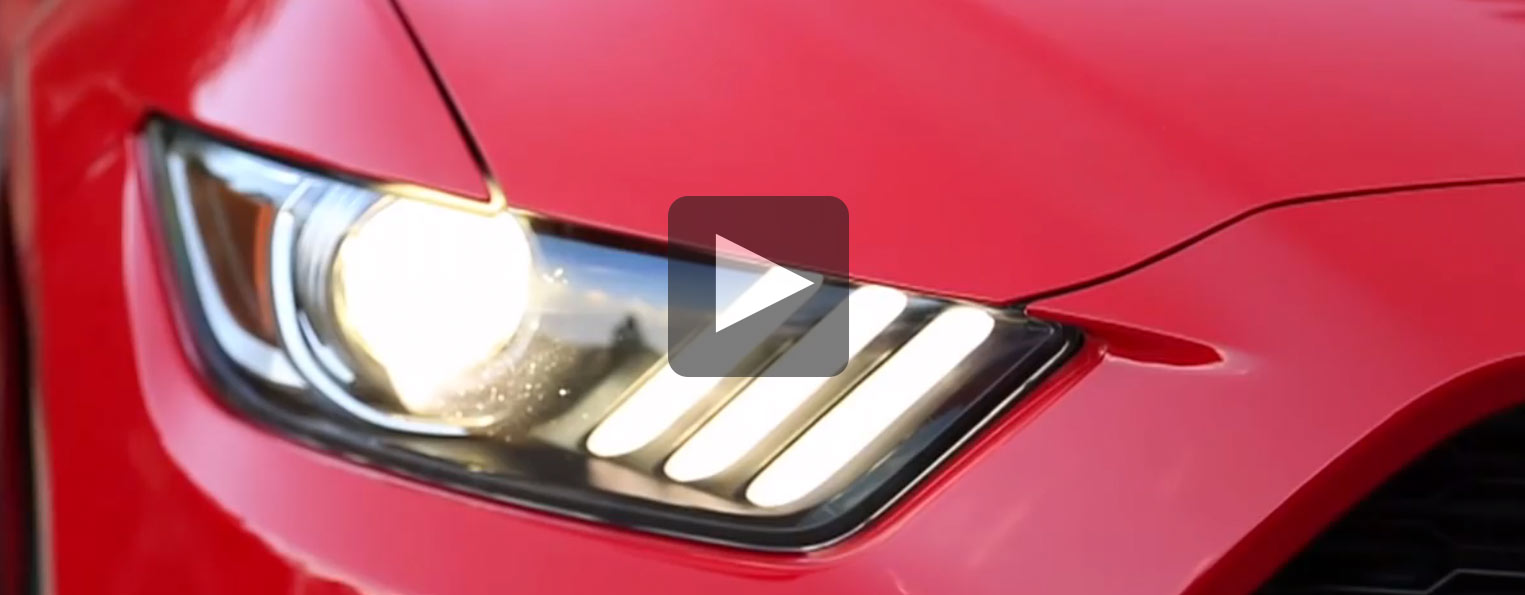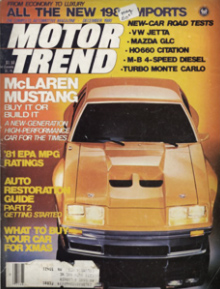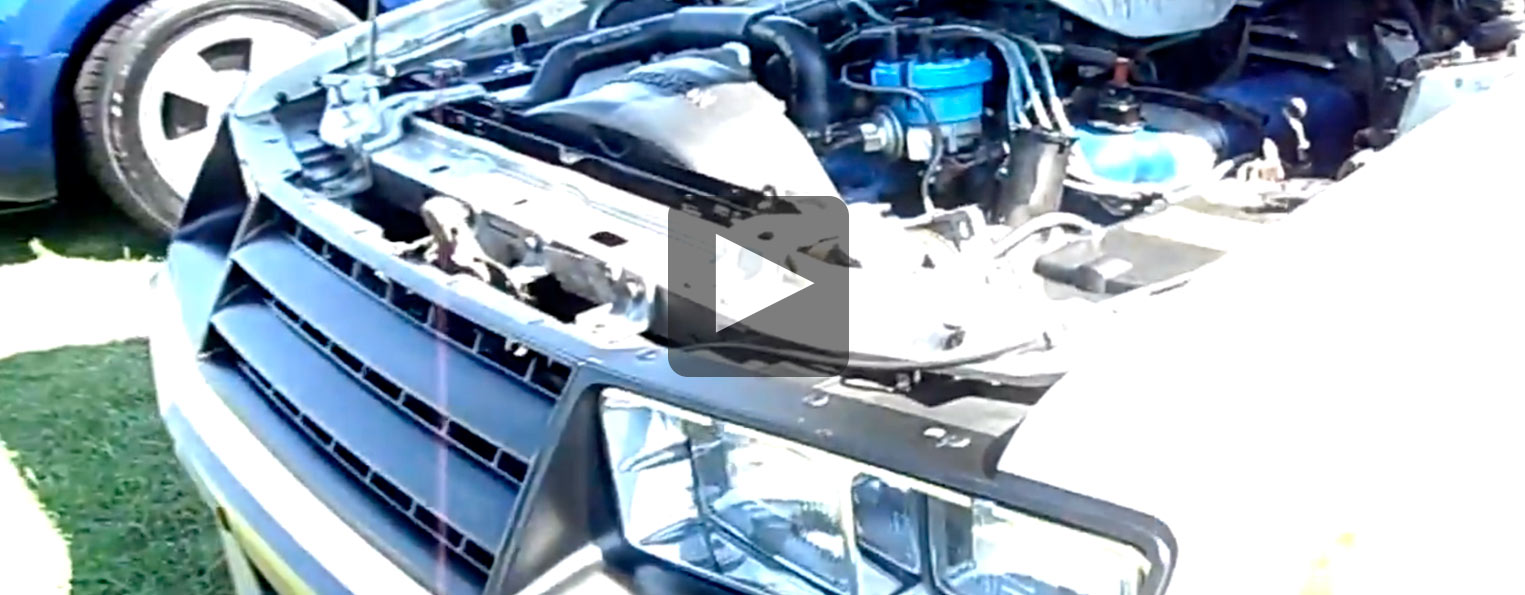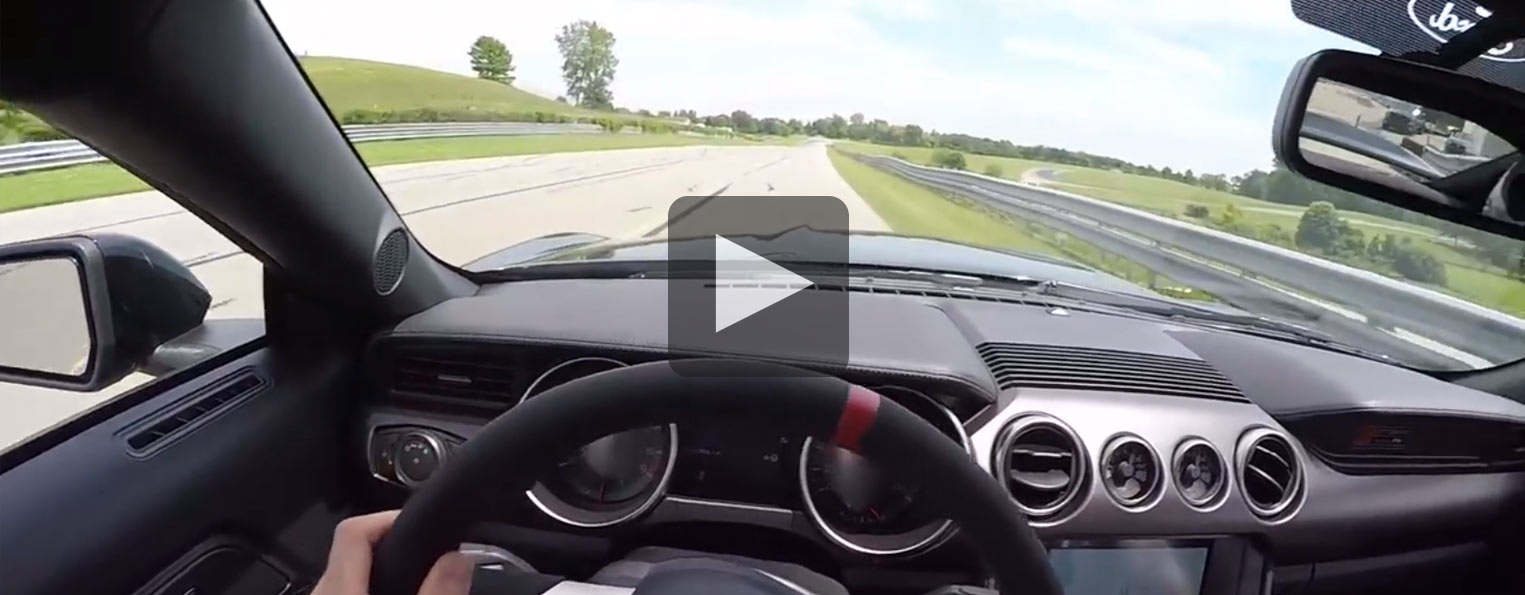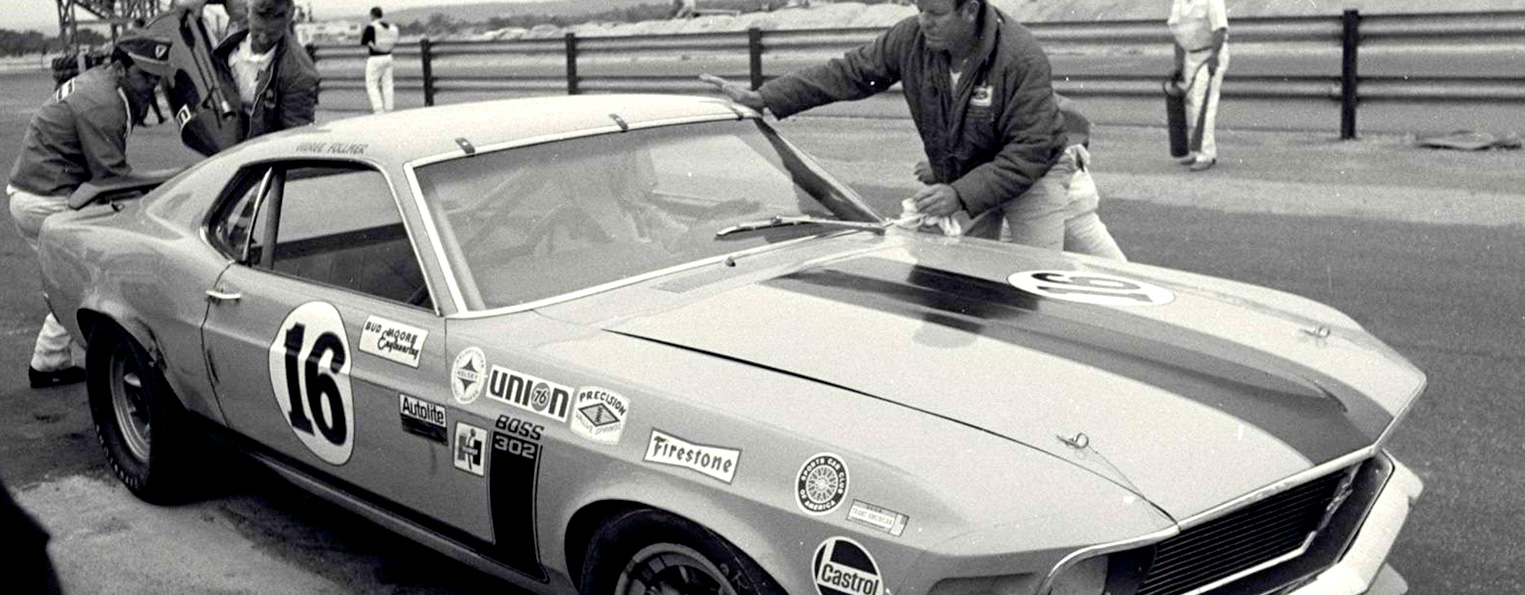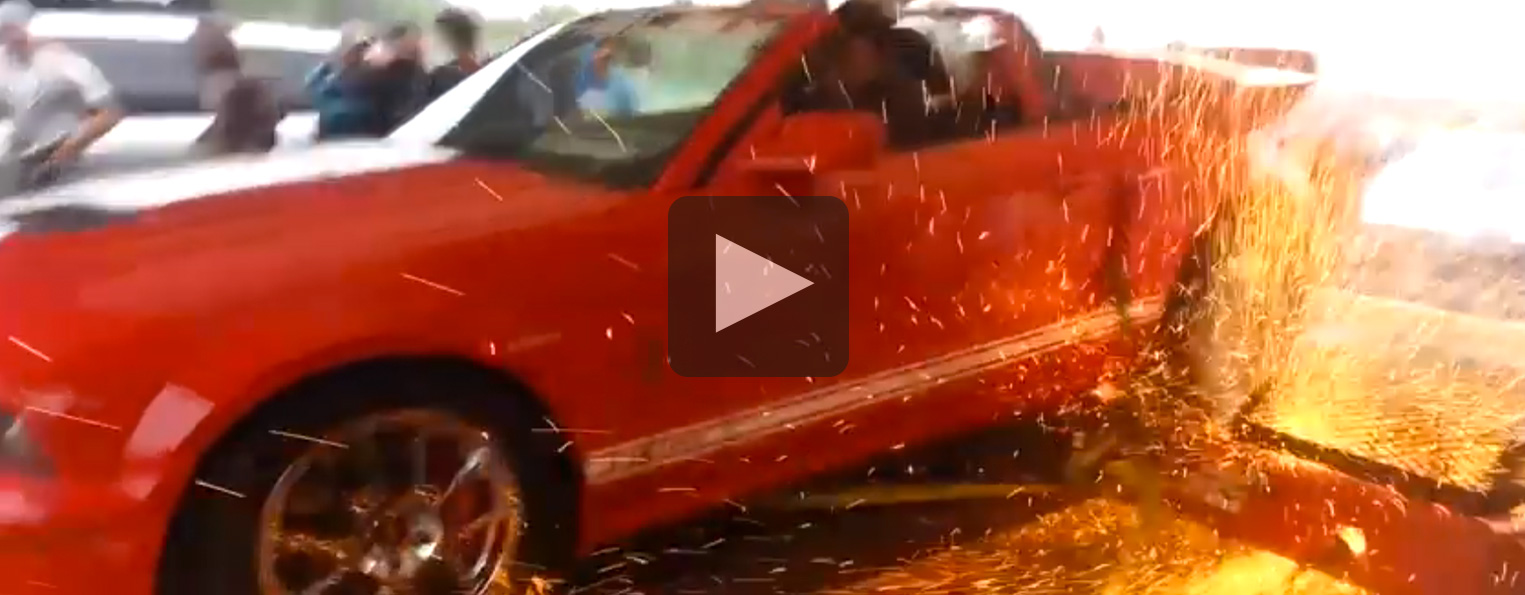1979 Mustang Pace Car
1979 was a very exciting year for Mustang fans. The Fox chassis was used to launch the third generation Mustang – a cult-favorite in the making that would leave its mark on the Muscle Car scene for years. But first, something special happened. The Mustang was selected as the pace car for the 63rd running of the Indy 500.
Indy 500 Pace Car
The Mustang hadn’t been selected to pace Indy since 1964. Three official pace cars were created for track duty. These cars looked identical to the replicas available for sale in every way except for a T-Top, (fitted by Cars and Concepts) an option that wouldn’t be available from the factory until the 1981 Mustang. They used specially prepared 5.0L V8 engines modified by Roush Industries using a Holley carb, aluminum high-rise intake, and 351 Windsor heads. The engine breathed through 1.84 intake / 1.54 exhaust valves with 289 HiPo springs and the 1970 Boss 302 solid lift cam. Internals included 1969 Boss 302 connecting rods, forged-steel crankshaft, and forged aluminum TRW pistons with Speed Pro rings. All pace-duty cars used modified C-4 automatic transmissions.
Jackie Stewart piloted the actual Mustang pace car for the start of the 1979 Indy 500, while Jim Rathmann took over pacing duties during caution periods throughout the race. Later the same year two of the three pace vehicles were re-styled for use in the Detroit Gran Prix. White paint was shot over the factory Pewter Polly and a new graphics package was applied. These original pace cars still wear the colors from the Detroit race, and are housed in a warehouse at Roush awaiting restoration.
1979 Mustang Pace Cars for Sale to the Public
The 1979 Mustang Pace Car replica was available to the public at a base price of $9,012 and $9,953 fully optioned. The car was only available as a hatchback (standard trim – non Ghia) and offered a choice of two engines and transmission options. The 302ci 5.0L was carried over from the Mustang II and available with a 4-speed manual or 3-speed automatic transmission. The 5.0L V8 produced 140 hp and 250 ft-lbs of torque. New for 1979 – the Mustang Pace Car was also available with the 2.3L Turbo four-cylinder using the 4-speed manual transmission. This combination provided 131 hp and 142 ft-lbs of torque. All Pace Cars used a 3.45:1 rear ratio 7.5” differential without trac-loc.
Pace Car Appearance
The Mustang Pace car distinguished itself from all other trim levels available in 1979. The front spoiler housed Marchal fog lights in a wide-mouthed lower radiator opening – flanked on each side with brake duct vents.
The aggressive lines of the newly designed Mustang were further exaggerated by the use of a two-tone paint scheme. (Ditzler/PPG Codes 33369) Pewter Polly every thing above the side molding and (9381) Flat black for the hood, top stripe, and lower half of the car. This color combination resulted in a car that both looks fast standing still – and quite exotic for its time.
Decals were worn on the hood – and side of the car. The hood wore the badge ‘MUSTANG’ in 10” tall, two toned lettering. The side of the car had “Official Pace Car” “63rd Annual 500 Mile Race, May 27 1979” with 4 graphic mustangs at the lead and the Indianapolis Speedway logo at the rear of the car. Bold stripes – Red and (2915) Vista Orange accent the hood, c-pillar, and taillights – while bright orange stripes accent the black side molding.
The rear spoiler for the 1979 Mustang Pace Car must be one of the most unique, and most functional looking ever made for a fox hatchback chassis. The leading edge follows the graceful line of the c-pillar – meeting at an aggressively angled duckbill that extends beyond the width of the vehicles upper silhouette.
Chassis and Suspension
The pace car rode on 15.35” (390mm) forged aluminum wheels wearing 190/65R Michelins. Suspension goodies included the rest of the TRX performance package – HD front and rear sway bars plus special shock-valving. Braking was provided by 9.3” front discs (10” on V8 cars) and 9” rear drum brakes. Polished stainless steel tips peeked out from behind.
Interior
Recaro seats were standard on the 1979 Pace Car and available in many different trims – the most awesome being the Houndstooth. Nothing said “Farwell 70’s, it was groovy knowing you” quite as well as this seizure inducing pattern.
1979 Pace Car Production Numbers
Dearborn Michigan Production Numbers
5.0L w/SROD 4spd manual——-1809
5.0L w/C-4 automatic———-1445
2.3L Turbo 4cyl w/4spd manual-4380
Dearborn Total Assembly Plant—7634
San Jose California Production Numbers
5.0L w/SROD 4spd manual——-593
5.0L w/C-4 automatic———-661
2.3L Turbo 4cyl w/4spd manual-1590
San Jose Total Assembly Plant—2844
Total Pacecar Production—-10,478
Unique Features of the 1979 Mustang Pace Car
- The 1979 pace car was the only Mustang to have fog lights. This required a different wiring harness for the front of the car – these harnesses will/would be marked “Pacecar.”
- Safety belts have “Firestone” under the buckles
- The front shoulder belts have a tag saying “Indy Replica” stitched in them
- (The only way to verify this is to remove the interior backseat panel and unwind the belt.)
- Pace cars were delivered with a card in/under the dash pad that says “Pacecar”
- Pace cars have the numbers “48″ in the VIN
- All 1979 Pacecars came with Recaro Seats
- A 5.0L car will have a “F” in the 5th spot in the VIN and a 4cyl turbo will have a “W” in the 5th spot in the VIN.
Web site links
http://www.facebook.com/pages/Ford-Mustang-Pace-Car-1979/237086004742


